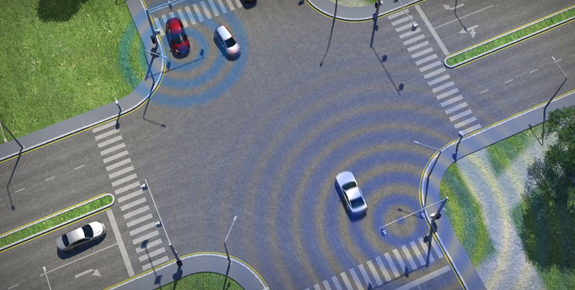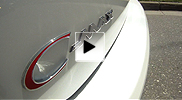Innovation
InnovationCars Talking to Traffic Lights and to Each Other; Ford Motor Company’s Vision on the Future of Vehicle Safety

BRENTWOOD, Essex, UK – While the all-new Ford Focus is impressing the media and customers alike with its class-leading autonomous driver assistance systems, such as Active City Stop, Lane Keeping Assistance, Traffic Sign Recognition and Blind Spot Detection, the boffins at Ford are not resting on their laurels.
The future of vehicle safety will build upon the innovative features now found in the all-new Focus, but there will also be an increasing use of vehicle-to-infrastructure (V2I) and vehicle-to-vehicle (V2V) communication, something that Ford is already demonstrating with its ‘smart intersection’, established near Ford’s Research & Innovation Centre in Dearborn, Mich., USA.
The smart intersection communicates with specially-equipped test vehicles to warn drivers of potentially dangerous traffic situations, such as when a vehicle is about to run through a red light. The intersection is outfitted with technology that can monitor traffic signal status, GPS data and digital maps to assess potential hazards, and then transmit the information to vehicles.
Once the information is received, the vehicle’s collision avoidance system may be able to determine whether the car will safely cross the intersection or if it needs to stop before reaching it. If the system determines the need to stop and senses that the driver is not decelerating quickly enough, it issues visual and audio warnings to the driver, essentially giving the driver a crucial ‘third eye’ when it comes to spotting dangers at a crossroads.
In Europe, Ford’s Research & Advanced Engineering division is also contributing to various research projects in cooperation with other OEMs, suppliers, research institutes and governments in order to develop and evaluate innovative safety features that make use of V2I and V2V communication. A key part of this is the ‘Safe and Intelligent Mobility – Test Field Germany (simTD)’ project, which will run throughout 2012 around Frankfurt/Main, Germany, as a 400-vehicle field test, designed to evaluate feasibility and scalability of cooperative wireless systems in a real-world environment.
“For simTD, 100 drivers actively collect data by completing driving tasks and 300 drivers passively collect data by driving where they would normally go,” said Christian Ress, technical expert connectivity, Ford Research & Advanced Engineering Europe. “This wireless vehicle project is taking into consideration hazard and collision warnings as well as the delivery of real-time traffic information, including traffic light and traffic sign information. The goals of simTD are to improve road safety and traffic efficiency, and to pave the way for full deployment of V2V and V2I systems in Europe.”
Ford is also contributing to the European harmonisation and standardisation of wireless communication systems and applications within the framework of the ‘DRIVE C2X’ project, which is co-funded by the European Commission. DRIVE C2X is the acronym for ‘DRIVing implementation and Evaluation of C2X communication technology in Europe’.
“This project has just kicked off in January 2011 and brings together more than 40 stakeholders, such as OEMs, suppliers, universities and public authorities,” said Ress. “Within the framework of DRIVE C2X, field operational tests in a real-world environment will be conducted in seven test sites all over Europe implementing the same technology in order to ensure interoperability across all European countries.”
The fully-functioning smart intersection in Dearborn is clearly just the beginning of Ford’s approach to safety for the future. There are challenges still ahead, as successful deployment of cooperative systems can only be effective if all vehicles use similar equipment and “speak the same language”. Ress adds: “That’s why it’s critical for Ford to work closely with other automakers, suppliers and governments to agree on standard communication protocols and message sets. At Ford, we would like a system for connected vehicles that works in a similar manner globally.”
It may seem like science fiction with traffic signals sending messages to vehicles and vehicles talking to each other, but Ford believes this is the future for not only vehicle safety, but also for traffic congestion reduction, no matter where it is in the world you drive your Ford vehicle. And with the introduction of its smart intersection and the current commitment to establishing a useable wireless infrastructure that all vehicles can utilise, that future is much closer than Ford customers may realise too!











Connect With Ford
Ford Motor Company on Facebook
Ford Motor Company on YouTube
Follow @Ford on Twitter
Ford Motor Company on Flickr